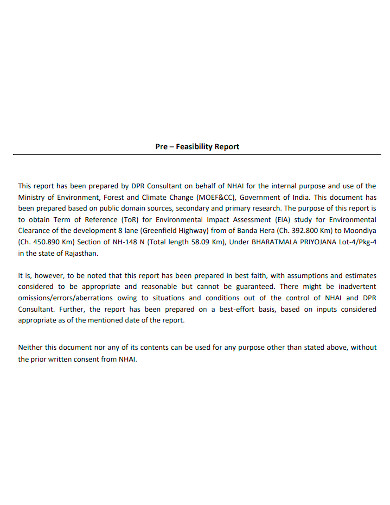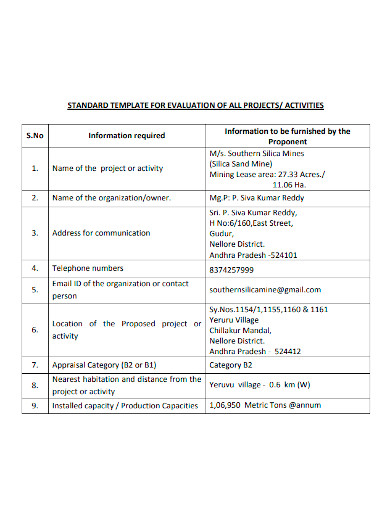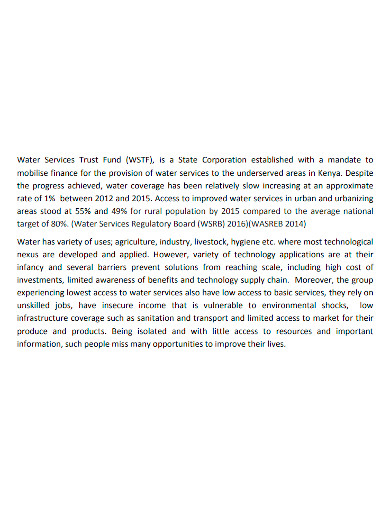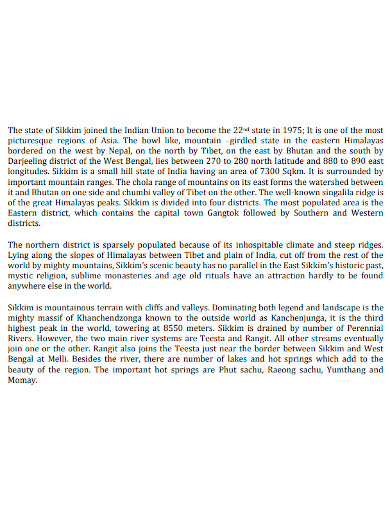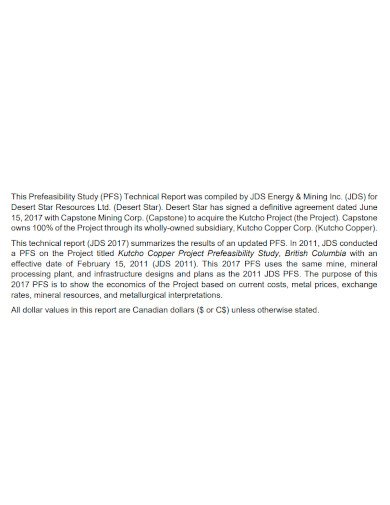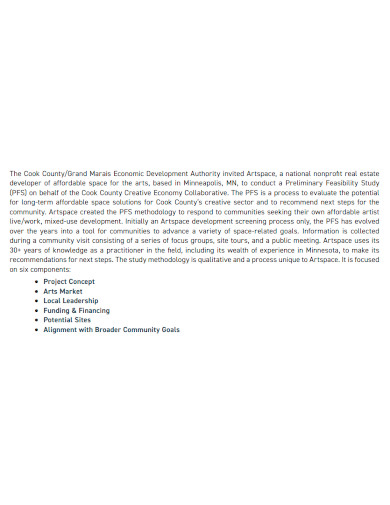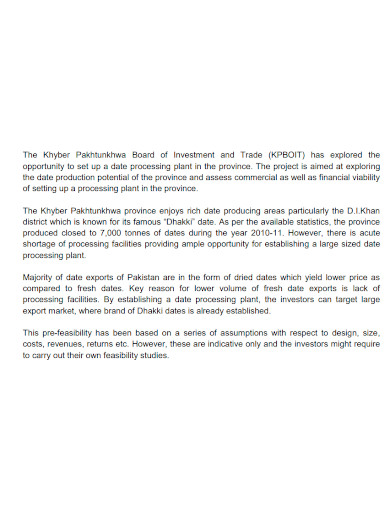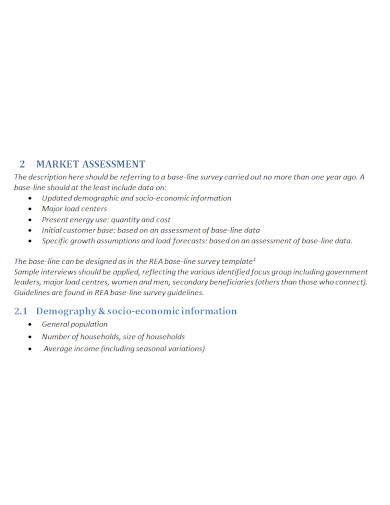In all sorts of project, regardless of the shape, type and size, it is always vital to be able to know whether the project is feasible or not. This is one of the most important components of project development, being able to realize early on how the project will go and will it return the expected profits. But amateurs to the business and corporate world might get confused with what steps are the best steps to take to ensure project fulfillment or successful business. And most people who have been present in the corporate world for a significant amount of time may not know this. But there is actually a preliminary step a project developer can take before conducting a feasibility study. And that is the pre-feasibility study.
The principle of both studies are similar, to inspect whether the proposed project is feasible or not. The difference is how deep the analysis will be. Both studies are inherently linked to each other, pre-feasibility studies provide a rough inspection of all the possible solutions to filter out the least feasible alternatives early on. Once that’s done, feasibility studies are then conducted to give a much deeper study that should provide information that the pre-feasibility report can’t provide. Again, on paper, it’s mostly the same, the concept, the steps in writing, the only difference is that feasibility reports take way more time and resources to conduct. So most developers write a pre-feasibility study early on to help them cut the costs on conducting a full scale feasibility report. By removing the fairly irrelevant ones early on. To get to know the document a lot more, check out these pre-feasibility report samples we have provided below. You can also use these as a guide, as an inspiration, or even as a template for when you finally start writing your own.
10+ Pre-Feasibility Report Samples
1. Pre-Feasibility Report Sample
2. Environmental Pre-Feasibility Report
3. Sample Project Pre-Feasibility Report
4. Water Service Pre-Feasibility Report
5. Electric Project Pre-Feasibility Report
6. Pre-Feasibility Final Report
7. Printable Pre-Feasibility Report
8. Pre-Feasibility Technical Report
9. Editable Pre-Feasibility Report
10. Pre-Feasibility Study Report
11. Standard Pre-Feasibility Study Report
What Is a Pre-feasibility Report?
A pre-feasibility study is a preliminary study done to inspect, determine, analyze, and choose the best project solution or alternative. Before this study, we have a couple possible solutions and alternatives, then essentially, we want to know which one is the best step to take, both practically and financially. I pre-feasibility studies, we pick the best ideas among a couple more ideas. It can be quite hard and time consuming to explore each and every idea deeply, so it is best to use the shortcut method in this early stage. After choosing several solutions, considering them to be feasible, it is then recommended to continue the study into full feasibility report to get a deeper analysis of the selected project scenarios.
How to Write a Pre-feasibility Report
Writing any sort of feasibility study may not be so easy for some, or for everyone for that matter. This document and the feasibility study is usually used to sway the decision makers into making a decision that should benefit the project or company, so you have to make sure that you are writing and conducting the study properly. Even if a pre-feasibility report does not dive deep into the matters at hand, there are still a lot of components that one has to consider when writing this document. Since it’s basically just similar to a feasibility report, most of these components will more or less be the same. We will explore these components in more detail below.
- Identify project description
First and foremost, you have to be clear in establishing the project and its purpose. This is the same with feasibility studies as well. Being clear with your project and the criteria of success should be able to help you filter out the alternatives in the best way possible. Following what your company needs and what services the project aims to promote. This should also serve as the report’s introduction so make sure that the project description is enticing enough to make your audience want to continue reading your report. - Enumerate the possible alternatives
You should then list down the alternatives that you have in mind, or solutions the team has come up with that you think can lead to the project’s success. To successfully do this, you might need to perform an alternatives analysis to create a description of these solutions . These are still tentative will be filtered down in the next step. - List evaluation constraints
After enumerating the solutions that you have in mind, it’s time to set them against a criteria of success that you have already established. This will isolate the solutions that has the potential to lead the project to success, granted that it follows the evaluation criteria. Mapping out the ideal evaluation constraints and the ideal outcomes that you are after will allow you to make the most practical and logical decision for your project. - Present the most feasible solutions
It is then time to present these solutions that you have isolated to your project supervisors and investors. Use your expertise and experience in the field to propose these solutions in the best and most convincing way possible. Make sure that they realize that these steps have the greatest potential to let the company keep to its optimal resource management while still gaining the best benefits from the project. It’s only a matter of conducting a full feasibility study and you will be one step closer to a successful project. - Conclusion
The last step in writing every document is the conclusion. Summarize the project’s aim and purpose one last time, and re-state the best alternatives that you have come up with. Explain why the company should take time into studying these alternatives by comparing data and statistics from past projects.
FAQs
What is the importance of a pre-feasibility study?
The pre-feasibility study helps in determining whether a project is worth the effort and resources or not. However, pre-feasibility studies rely heavily upon the project itself.
How long should a feasibility study take?
Expect a feasibility study to last about 60 to 90 days. More often than not, even longer than that. It really depends whether the market is bustling or just really silent.
Can I hire someone to do a feasibility study?
If you’re new to the scene and not quite familiar with your environment, it is strongly advised that you hire a consultant to conduct the study for you.
Both feasibility and prefeasibility studies can provide investors with useful updates on the progress of a project that a company has undertaken. Both these studies provide a much clearer picture of the company’s milestones and challenges that they might encounter deep into development.
Related Posts
Sample Chemistry Lab Reports
School Accomplishment Report Samples & Templates
Field Report Samples & Templates
Sample Science Project Reports
Business Report Samples & Templates
Survey Reports Samples & Templates
Sample Feasibility Reports
Psychological Assessment Report Samples [ Clinical, Child, Intake ]
Report Format Samples & Templates
Acknowledgement for Internship Report Samples [ Hotel, Hospital, Teaching ]
Field Trip Report Samples [ Agriculture, Educational, Environmental ]
Student Counseling Report Samples
Narrative Accomplishment Report Samples [ Science, Teacher, Reading ]
Sample Acknowledgment Report Templates
Internship Narrative Report Samples


